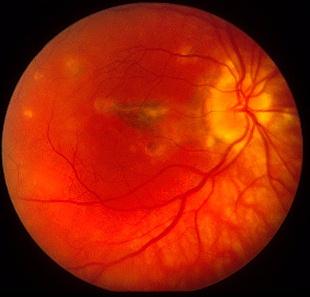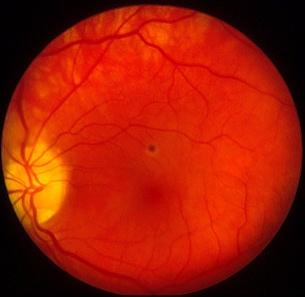
Figure 1 |

Figure 2 |
| Medical Retina & Posterior Segment: |
| Case 25 |

Figure 1 |

Figure 2 |
| This 29 year-old woman presented to the eye
casualty with a one-week history of distorted vision in both eyes. Her
visual acuity was 6/12 in the right eye and 6/9 in the left with a myopic
correction of -2.75 and -3.25 respectively. Slit-lamp examination of the
anterior segment was normal and there was no vitritis. However, fundoscopy
revealed multiple small white lesions. The blood tests including ACE, VDRL/TPHA
and auto-antibodies were normal. Her past medical history was unremarkable.
The above pictures were taken five weeks later.
a. What is the most likely diagnosis? Punctate inner choroidopathy.
The differential diagnosis include all types of multifocal choroidopathies in which there are multiple discrete lesions at the level of the choroid and the retinal pigment epithelium. These include:
The main cause of visual loss is the development of choroidal neovascularization around the scars which occurs in about one third of patients.
Oral or subtenon steroid are recommended for this condition. Photocoagulation is used to treat sight-threatening choroidal neovascularization. |
| Click here for the questions | Click here for the main page | Click here for MRCOPhth / MRCS tutorials |